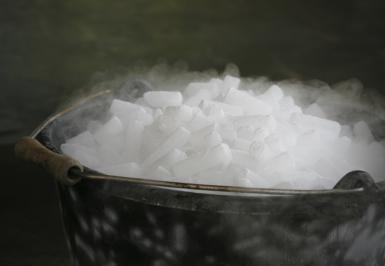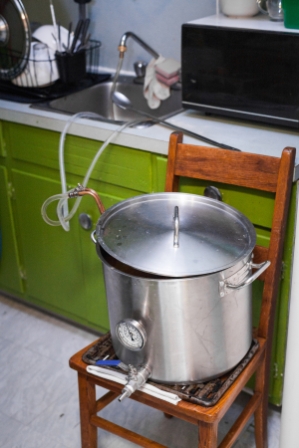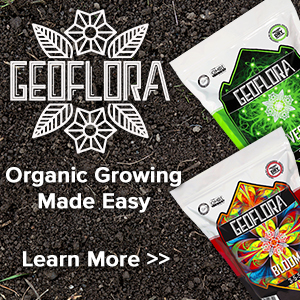
Carbon Dioxide (CO2) enrichment for indoor gardening is nothing new; however, recently growers have been looking for new lower cost alternatives to expensive propane burners and CO2 bottle systems. With fuel costs continuing to rise with no end in sight propane use for CO2 will be on the wane. Many growers in this day and age have smaller indoor grow spaces and are looking to save money by not having to spend thousands of dollars to be able to supply their grow space with CO2.
With this in mind, here are some alternatives. Let us first look at some basics; Photosynthesis is the process by which plant leaves make carbohydrates. Sunlight, CO2 and water are converted into carbohydrates and oxygen (O2) by the action of chlorophyll in the chloroplasts of the plant.
Plants growing indoors under artificial light often lack enough CO2 to efficiently photosynthesize. Plants can quickly use up the available CO2 and convert it to O2. When O2 levels rise too high, stomata on the leaf surface close and plant growth virtually stops.
Growing areas that have limited or no air-circulation can be affected even more. Lack of air movement causes CO2 that would be used by plants to be unavailable due to its distance from the leaf, usually down low in the growing area. Moving air around helps solve this problem. When plants are able to maximize the process of photosynthesis, the result is larger plants with larger yields.
Adequate levels of light, water and nutrients are needed for good plant growth. Therefore, it might seem logical to assume that the growth-promoting effects of indoor CO2 enrichment would be reduced when these essential resources are present in less-than adequate amounts. In many instances, in fact, the percentage of growth enhancement provided by indoor CO2 enrichment is even greater when these important natural resources are present in suboptimal quantities. And when they are in such short supply that plants cannot survive under ambient CO2 concentrations, elevated levels of CO2 often enable such vegetation to grow and successfully reproduce where they would otherwise die. One of the reasons that plants are able to respond to indoor CO2 enrichment in the face of significant shortages of light, water and nutrients is that
CO2 enriched plants generally have more extensive and active root systems, which allows them to more thoroughly explore larger volumes of soil in search of the things they need.
Ambient CO2 levels typically hover around 400 parts per million (ppm). Ambient carbon dioxide levels tell the percentage of CO2 in the air without any enrichment. Indoor plants can quickly convert this CO2 through photosynthesis and deplete the available CO2. When
CO2 levels fall to around 150 ppm, the rate of plant growth quickly declines. Enriching the air in the indoor growing area to around 1200-1500 ppm can have a dramatic effect on plant growth. Growth rates typically increase by up to 30 percent. Stems and branches grow faster, and the cells of those areas are more densely packed. Stems can carry more weight without bending or braking. CO2 enriched plants have more flowering sites due to the increased branching effect.
Carbon dioxide enrichment also affects how a plant can tolerate high temperatures. At the highest air temperatures encountered by plants, CO2 enrichment has been demonstrated to be even more valuable. It can often mean the difference between living and dying. It typically enables plants to maintain positive carbon exchange rates in situations where plants growing under ambient CO2 levels exhibit negative rates that ultimately lead to their demise. Water rises from the plant roots and is released by the stomata during transpiration. CO2 enrichment affects transpiration by causing the stomata to partially close. This slows down the loss of water vapor into the air. Foliage on CO2 enriched plants is much thicker and slower to wilt than plants grown without CO2.
Alternatives to Traditional CO2 Production
Composting
There are many alternatives to traditional CO2 production. The utilization of compost for CO2 has been used for years but with some drawbacks. The composting of organic matter results in bacteria breaking down the organic matter and one of the byproducts is CO2. Many large-scale greenhouses have used composting rooms adjacent to the growing greenhouse to provide CO2 for their crop. CO2 is pumped from one room into the other by circulation fans. One drawback is that composting so close to your growing area can attract insects that could potentially damage your crop.
Home Brewing

Sugars, water and yeast have been used, taking the process from beer making and putting it to use for CO2. Not a bad deal if you like to brew beer. The yeast eats the sugar and releases carbon dioxide and alcohol as by-products. If you are not into brewing beer, you can simply mix brewer’s yeast and sugar with water. It is important to have the temperature of the water right. Water that is too hot will kill the yeast and if the water is too cold the yeast will not activate. The process is simple and inexpensive but does have some drawbacks. It can present an odor problem and because it needs to be re-mixed every 4-5 days, is somewhat time consuming.
Dry Ice
Dry ice which is frozen carbon dioxide releases CO2 when exposed to the atmosphere. As it melts it is converted from a solid to a gas. Dry ice has no liquid stage, which makes it easy to use and requires very little clean-up. Dry ice can be expensive for long-term use and it is difficult to store. Using insulated containers can slow the melting process, but it cannot be stopped.
Mycelial Based CO2
Mycelial based CO2 production is relatively new. The biological process is not new, but the application is. Mushrooms do act like humans, in that they breathe in oxygen and break down complex carbon compounds then exhale CO2. As mushroom mycelium colonizes the substrate, it eventually wants to form a fruiting body. After fruiting body development has occurred, the mycelium begins to slow its growth and subsequently reduces CO2 production. A non-fruiting strain of mycelium has been discovered by a professional mycologist and is now being used for indoor gardening. The strain the company is using is strong and continues to produce CO2 for at least 6 months. The CO2 production then begins to slowly decline but CO2 levels above ambient can still be detected up to 16 months later. There is no maintenance or set-up with this option. Ease of use and low cost make mycelial based CO2 a good option.
As a grower, you know the time and energy you spend working your indoor garden is tremendous. Adding CO2 is not only a good idea, but is necessary to have the most efficient growing area possible. No matter how you get CO2 into your indoor growing area, you will see a benefit. Natural CO2 production is a good choice in this day and age. The ease of use and the reduced effect on the environment make these options the green choice. They are easy on your budget and your plants will love you for it.
Glen Babcock is the owner of Garden City Fungi and the founder of ExHale Homegrown CO2. Glen has been involved in agriculture his entire life. Glen graduated from the University of Montana with a degree in Forestry and has been a mycologist for over 23 years. You can visit his websites at ExhaleCO2Bags.com and GardenCityFungi.com.




Comment here